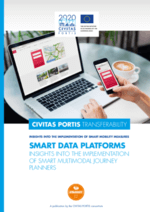
Aberdeen (United Kingdom)
Aberdeen is situated in the north-east of Scotland on the North Sea and is Scotland’s third largest city.
The city has a population of 230,400 and has in recent decades, experienced strong economic growth because of the energy industry.
However as a result of high population growth and increasing demand on old infrastructure, the city has ambitious plans to transform the transport network and encourage sustainable modes of travel in line with ambitious climate change targets.
| City area | 185.7 km2 |
| Population | 230,400 (2015) |
| Population density | 1,240 people per km2 (4th highest Scotland) |
| Climate | Oceanic |
| Average summer temp. | Approx. 17 degrees |
| Gender balance (Aberdeen City) | Male 114,400 (49.7%), Female 115,900 (50.3%) |
| Life expectancy (Aberdeen) | Female = 80.9, Male = 76.6 |
| Life expectancy (Scotland) | Female = 81.1, Male = 77.1 (2015) |
| Car ownership rate (2011) | Aberdeen City 68.6%, Aberdeenshire 85.7% |
| Accident rate (2012) | 378 reported accidents |
| Jobs/resident aged 14-64 | Aberdeen = 1.20; Scotland = 0.79 (2015) |
| Median Household Income (2015) | Aberdeen = £30,735 Scotland = £26,751 |
| Median Gross Annual Pay (2016) | Aberdeen = £32,013; Scotland = £27,953 |
| New enterprises / 10,000 adult pop. | Aberdeen = 55; Scotland = 49 (2015) |
Modal Share
Challenges
SUMP and Port Optimisation
With the development of the new harbour to the south of the city centre consideration needs to be given to how people and commuters will use the new road infrastructure at the same time encouraging use of active travel around the new harbour area. We will incorporate the need to consider and develop this within the Sustainable Urban Mobility Plan which is the overall transport strategy for the city centre.
Integrated Planning
New Mobility Lifestyles for Port Cities
Aberdeen has a high car dependency accompanied by old infrastructure which is struggling to cope with the current demand. The challenge here is to look at how to reduce car dependency, bring about a cultural change in peoples approach to travel and develop a road hierarchy for the Aberdeen Western Peripheral Route (AWPR) which is a major new road due to open in 2018. This new infrastructure allows us to re-look at how we use or allocate road space to encourage active travel.
(Car independent lifestyles, collective passenger transport, integrated planning, mobility management, public involvement)
Efficient and Cleaner Mobility for Port Cities
Our challenge within this work package is to look at how we collect and manage data, enabling us to better use the data to update transport models. This can therefore enable to region to better predict for future modelling. The measure will also look at range of different options in how to bring about behavioural change and encourage use of alternative means of transport.
Seamless and More Efficient Freight Movements
The freight movement across the region, providing essential trading and goods, is very important to the local economy. Improvements need to be made to freight routing within the region so freight operators can undertake more efficient routes, therefore potentially having less impact on city and regional traffic. Within this we will also look at how a ‘Freight Gateway’ could be developed and pilot alternatively fuelled vehicles.
Transport Infrastructure
Car network
Cycling network
~50.5km of dual use pavements
~48km of ‘recreational’ paths.
~67km of advisory road cycleway
~1km of mandatory on road cycle way
~2km of dedicated / segregated cycleway.
Public transport network
Full-time designated bus lane - 0.725 Km
Part-time designated bus lane - 8.225 Km
Park and Ride facilities: 2 + 1 due to open Spring 2017/ 1 in Shire
Aberdeen after PORTIS
Commuting Travel Time, reduction 15%
Modal Shift Cycling +20%, Walking +20%
AWPR: Modal shift from car to public transport exceeding 15% (5% expected for whole city), increased car occupancy through pooling from 1.15 persons per vehicle to a target of 1.33 reducing peak traffic volumes by 15% with a 20% reduction in energy consumed and reduction in air pollutants. Increase in business activity and job creation around the intermodal hubs on the AWPR will be encouraged through good multi-modal access and mobility choice.
City Centre/Port-aim to reduce city centre traffic levels by 20% as a combined result of PORTIS measures and AWPR effect. Active mobility expected to increase by 20% with consequent health benefits.
Southern Corridor-improved traffic flow control, enhanced information to goods operators, improved accessibility to/from port, reduced goods traffic on other urban corridors, reducing pollution levels.
Projects
Mobility solutions
Resources
Multimedia Library
This is recommended related external content and can be viewed by clicking on it. By clicking you consent to the display of external content. This enables personal data to be transmitted to third-party platforms.
Read more about our privacy policy.




















